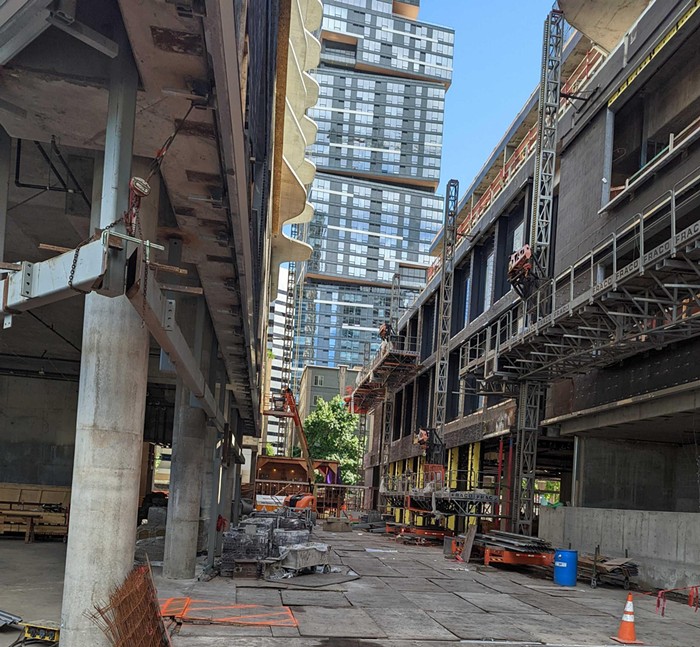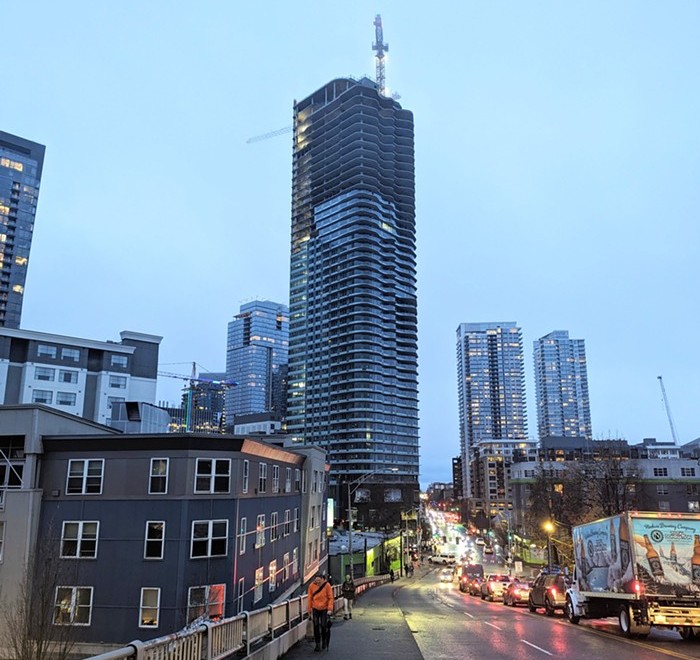
The thing you can't help but notice while driving around San Francisco is the absence of active construction. As someone from Seattle who constantly hears banging and drilling and builders shouting up and down the street—and who, until recently, could see a giant crane from their bedroom window (it seems to have jumped across South Alaskan Street to do work on a new development next to Columbia City Station)—the absence of any kind of construction is just spooky. It recalled that Hungarian fairy tale about a wicked spell that time-trapped a bunch of kids in the branches of a huge tree. As the world around these children changed, they remained the same. The moral of the fairy tale—at least for me—is that youth is only beautiful if it is in time, aging.
Though San Francisco has seen an increase in building permits this year (it's "up almost 142 percent of the norm"), it still not nearly enough. The most expensive city in the U.S. needs new and wage-related housing, badly. But here is the thing: When SF does build something new (usually, of course, luxury apartments), it's almost always better designed than what we see in Seattle, a city undergoing an unprecedented construction boom (there 58 cranes in Seattle, and only 22 in San Francisco).
It is that boom that is behind much of the bad architecture in Seattle. As I was recently told by a local architect (who asked not to be named), developers in this city are in a position not to care about how a building looks. They just get the thing up and running. The architect also pointed out that "there is no real return on investment for developers," and so "quality is not given a premium in the marketplace."
In SF, where it's much harder to build, there is pressure to make the most of the opportunity and so developers there are a little more open to making an aesthetic statement. Nevertheless, the new architecture in SF does not at all compare to what can be found in Portland, Oregon (a city with 32 cranes). If you are an architect and want to do something impressive, do not bother with Seattle. Go down to Portland. That city is up on things.

My architectural heart, however, is up in Vancouver. There we have a program whose appearance and development comes closest to what I have in mind for a socialist city. Vancouverism, as it is called, points to process philosophy and its architectural equivalent—an urbansim that grows from one aqua-green crystal. The look of my socialist city would sound like Brian Eno's "Discreet Music."















